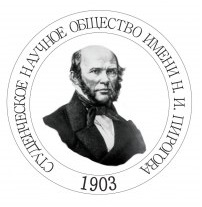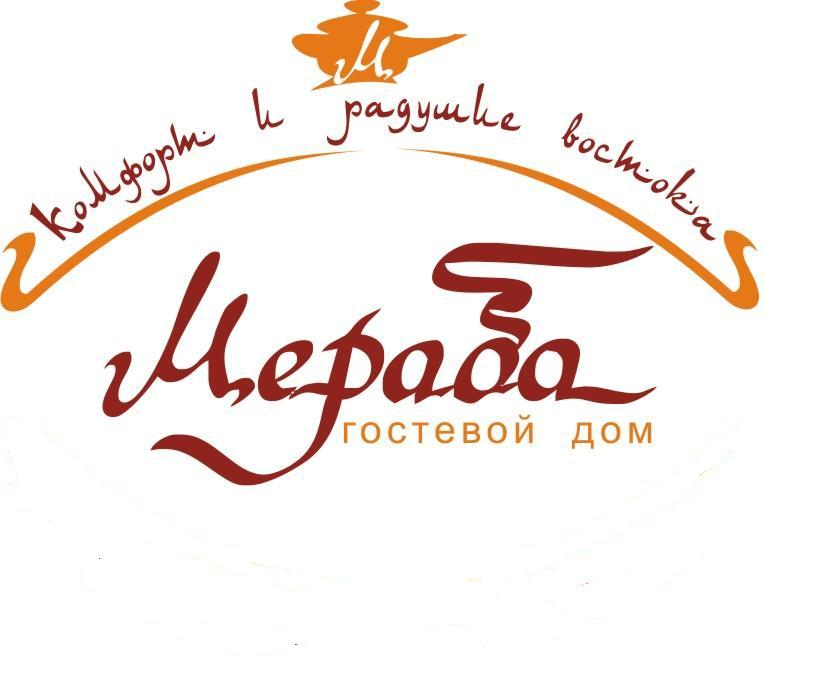МОЛОДЁЖНЫЙ ПРОЕКТ ДЛЯ ТЕХ, КТО ДЕЛАЕТ ПЕРВЫЕ ШАГИ В НАУКЕ
/components/bitrix/system.auth.form/auth_alm/images/login.gif) Войти
Войти /components/bitrix/system.auth.form/auth_alm/images/register.gif) Регистрация
Регистрация
Войти в корпоративную почту как автор/член редколлегии/рецензент журнала




УСПЕХИ В НАУКАХ О ЧЕЛОВЕКЕ / ACHIEVEMENTS IN HUMAN SCIENCES / FORTSCHRITTE IN DEN HUMANWISSENSCHAFTEN
Ng Pui Yee, Irene Wong Chew Ling
Pathogenesis of Complications of Oocytes Donation (OD)
Ng Pui Yee, 6th year student at Medical Department of I.M. Sechenov Moscow State Medical University
![]() ORCID ID https://orcid.org/0000-0002-3687-0708
ORCID ID https://orcid.org/0000-0002-3687-0708
E-mail: ng-pui-yee@j-spacetime.com; kellynpy94@gmail.com
Irene Wong Chew Ling, 6th year student at Medical Department of I.M. Sechenov Moscow State Medical University
![]() ORCID ID https://orcid.org/0000-0002-4803-2824
ORCID ID https://orcid.org/0000-0002-4803-2824
E-mail: irene-wong-chew-ling@j-spacetime.com; irenewong@live.com.au
Oocyte donation (OD) is the process by which donated eggs are used to conceived in another woman with donor sperm or own husband’s sperm. OD makes it possible for subfertile women to conceive. OD is a specific method of artificial reproductive technology that is accompanied by higher risk of preeclampsia during pregnancy. Pregnancies achieved using OD with unrelat-ed donors are unique, since the entire fetal genome is allogeneic to the mother. The more antigenic dissimilarity, the more risk of maternal morbidity due to disturbance of immune tolerance which intervenes in modulating pregnancy related pathologies. Besides that, dysregulation of the local immune response at the fetal-maternal interface lead to higher incidence of placental pathological lesions, such as chronic villitis of unknown etiology, chronic deciduitis and massive chronic intervillositis in OD.
This paper is maternofetal immunological tolerance phenomenon studies review, and to characterize it and relate this phe-nomenon during pregnancies with a semiallogeneic fetus, and those with an allogeneic fetus in OD pregnancies we used source, phenomenological, problem and system analysis, classification and descriptive methods. Using these approaches we also addressed whether an inadequate maternal immunological response to the allogenic fetus could lead to a higher prevalence of preeclampsia in OD pregnancies.
We conclude that OD provides a valuable addition to the list of treatment options for women who require artificial reproduc-tive technology. The benefits of having a take-home baby are counter-balanced by the higher risk of maternal morbidity. The increased rate of complications may be related to the allogeneic nature of the fetus. Understanding the role of the immune system in successful OD pregnancies also has broader biomedical significance in that it may also give insight into immune mechanisms leading to immunologic tolerance for HLA mismatched solid organ transplants.
Keywords: oocyte donation; preeclampsia; chronic villitis of unknown etiology; chronic deciduitis and massive chronic intervillositis; immunological tolerance
Cite MLA 7:
Ng, P. Y., and I. Wong Chew Ling. "Pathogenesis of Complications of Oocytes Donation (OD)." Electronic Scientific Edition Almanac Space and Time15.1 (Studia Studiosorum: Achievements of Young Researchers) (2017). Web. <2227-9490e-aprovr_e-ast15-1.2017.26>.
Нг Пуи Йее, Ирене Вонг Чеу Линг
Патогенез осложнений донации ооцитов (ДО)
Нг Пуи Йее, студентка 6 курса лечебного факультета Первого Московского государственного медицинского университета им. И.М. Сеченова
![]() ORCID ID https://orcid.org/0000-0002-3687-0708
ORCID ID https://orcid.org/0000-0002-3687-0708
E-mail: ng-pui-yee@j-spacetime.com; kellynpy94@gmail.com
Ирене Вонг Чеу Линг, студентка 6 курса лечебного факультета Первого Московского государственного медицинского университета им. И.М. Сеченова
![]() ORCID ID https://orcid.org/0000-0002-4803-2824
ORCID ID https://orcid.org/0000-0002-4803-2824
E-mail: irene-wong-chew-ling@j-spacetime.com; irenewong@live.com.au
Донация ооцитов (ДО) — это процесс, с помощью которого женщине подсаживают бластоцисты, образованные из яйцеклетки другой женщины и донорской спермы или спермы собственного мужа. ДО предоставляет бесплодным женщинам возможность забеременеть. Это особый метод искусственных репродуктивных технологий, который имеет повышенный риск преэклампсии во время беременности. Беременность, достигнутая с использованием ДО с несвязанными донорами, уникальна, поскольку весь геном плода является аллогенным для матери. Чем больше антигенного несходства, тем больше риск развития осложненеий беременности из-за нарушения иммуннологической толерантности. Кроме того, дисрегуляция локального иммунного ответа может приводить и к плацентарной патологии, такой как хронический виллит, хронический децидиутик и массивный хронический интервиллозит. Цель этого обзора — охарактеризовать механизмы развития осложнений беременности при ДО.
Ключевые слова: донация ооцитов; преэклампсия; хронический виллит; хронический децидиутик; массивный хронический интервиллозит; иммуннологическая толерантность.
Цитирование по ГОСТ Р 7.0.11—2011:
Ng, P. Y., Wong Chew Ling, I. Pathogenesis of Complications of Oocytes Donation (OD) [= Патогенез осложнений донации ооцитов (ОД)] [Электронный ресурс] / Нг Пуи Йее, Ирене Вонг Чеу Линг // Электронное научное издание Альманах Пространство и Время. — 2017. — Т. 15. — Вып. 1: Studia studiosorum: успехи молодых исследователей. — Стационарный сетевой адрес: 2227-9490e-aprovr_e-ast15-1.2017.26.
Список литературы / References
References | Литература
Abrahams V.M., Visintin I., Aldo P.B., Guller S., Romero R., Mor G. "A Role for TLRs in the Regulation of Immune Cell Migration by First Trimester Trophoblast Cells." Journal of Immunology 175.12 (2005): 8096—8104.
Bernardi F.C.B., Felisberto F., Vuolo F., Petronilho F., Souza D.R., Luciano T.F., de Souza C.T., Ritter C., Dal-Pizzol F. "Oxidative Damage, Inflammation, and Toll-like Receptor 4 Pathway Are Increased in Preeclamptic Patients: A Case-control Study." Oxidative Medicine and Cellular Longevity 2012 (2012): ID 636419. 6 p.
Derzsy Z., Prohászka Z., J. Rigó J. Jr., Füst G., Molvarec A. “Activation of the Complement System in Normal Pregnancy and Preeclampsia." Molecular Immunology 47.7—8 (2010): 1500—1506.
Devaraj S., Jialal I. "C-reactive Protein Polarizes Human Macrophages to an M1 Phenotype and Inhibits Transformation to the M2 Phenotype." Arteriosclerosis, Thrombosis, and Vascular Biology 31.6 (2011): 1397–1402.
Guleria I., Sayegh M.H. Guleria I., Sayegh M.H. “Maternal Acceptance of the Fetus: True Human Tolerance.” Journal of Immunology 178.6 (2007): 3345—3351.
Gundogan F., Bianchi D.W., Scherjon S.A., Roberts D.J. "Placental Pathology in Egg Donor Pregnancies." Fertil Steril 93 (2009): 397—404.
Halmos A., Rigó J. Jr., Szijártó J., Füst G., Prohászka Z., Molvarec A. "Circulating Ficolin-2 and Ficolin-3 in Normal Pregnancy and Pre-eclampsia." Clinical and Experimental Immunology 169.1 (2012): 49—56.
Hayashi M., Hamada Y., Ohkura T. "Elevation of Granulocyte-macrophage Colony Stimulating Factor in the Placenta and Blood in Preeclampsia." The American Journal of Obstetrics and Gynecology 190.2 (2004): 456—461.
Heikkilä A., Tuomisto T., Häkkinen S.-K., Keski-Nisula L., Heinonen S., Ylä-Herttuala S. "Tumor Suppressor and Growth Regulatory Genes Are Over Expressed in Severe Early Onset Preeclampsia—An Array Study on Case-specific Human Preeclamptic Placental Tissue." Acta Obstetricia et Gynecologica Scandinavica 84.7 (2005): 679—689.
Hiby S.E., Walker J.J., O'Shaughnessy K.M., Redman C.W.G., Carrington M., Trowsdale J., Moffat A. "Combinations of Maternal KIR and Fetal HLA-C Genes Influence the Risk of Preeclampsia and Reproductive Success." Journal of Experimental Medicine 200.8 (2004): 957–965.
Huang S.J., Zenclussen A.C., Chen C.-P., Basar M., Yang H., Arcuri F., Li M., Kocamaz E., Buchwalder L., Rahman M., Kayisli U., Schatz F., Toti P., Lockwood C.J. "The Implication of Aberrant GM-CSF Expression in Decidual Cells in the Pathogenesis of Preeclampsia." The American Journal of Pathology 177.5 (2010): 2472—2482.
Jensen F., Wallukat G., Herse F., Budner O., El-Mousleh T., Costa S.D., Dechend R., Zenclussen A.C. "CD19+CD5+ Cells as Indicators of Preeclampsia." Hypertension 59.4 (2012): 861—868.
Jin L.-P., Zhou Y.-H., Wang M.-Y., Zhu X.-Y., Li D.-J. "Blockade of CD80 and CD86 at the Time of Implantation Inhibits Maternal Rejection to the Allogeneic Fetus in Abortion Prone Matings." Journal of Reproductive Immunology 65.2 (2005): 133—146.
Kleinrouweler C.E., Wiegerinck M.M., Ris-Stalpers C., Bossuyt P.M., van der Post J.A., von Dadelszen P., Mol B.W., Pajkrt E. "Accuracy of Circulating Placental Growth Factor, Vascular Endothelial Growth Factor, Soluble Fms-like Tyrosine Kinase 1 and Soluble Endoglin in the Prediction of Pre-eclampsia: a Systematic Review and Meta-analysis." The British Journal of Obstetrics and Gynaecology 119.7 (2012): 778—787.
Kwak-Kim J.Y.H., Gilman-Sachs A., Kim C.E. "T Helper 1 and 2 Immune Responses in Relationship to Pregnancy, Nonpregnancy, Recurrent Spontaneous Abortions and Infertility of Repeated Implantation Failures." Chemical Immunology and Allergy 88 (2005): 64—79.
Lam C., Lim K. H., Karumanchi S.A. "Circulating Angiogenic Factors in the Pathogenesis and Prediction of Preeclampsia." Hypertension 46 (2005): 1077—1085.
Lambert G., Brichant J.F. "Preeclampsia: An Update." Acta Anaesth. Belg. 65 (2014): 137—149.
Laresgoiti-Servitje E., Gómez-lópez N., Olson D.M. "An Immunological Insight into the Origins of Pre-eclampsia." Human Reproduction Update 16.5 (2010): 510—524.
Leonard S., Murrant C., Tayade C., van den Heuvel M., Watering R., Croy B.A. "Mechanisms Regulating Immune Cell Contributions to Spiral Artery Modification — Facts and Hypotheses — A Review." Placenta 27.Supplement A (2006): 40—46.
Moffett A., Loke C. "Immunology of Placentation in Eutherian Mammals." Nature Reviews Immunology 65.8 (2006): 584—594.
Molvarec A., Shiozaki A., Ito M., Toldi G., Stenczer B., Szarka A., Nakashima A., Vásárhelyi B., Rigó J. Jr., Saito Sh. "Increased Prevalence of Peripheral Blood Granulysin-producing Cytotoxic T Lymphocytes in Preeclampsia." Journal of Reproductive Immunology 91.1—2 (2011): 56—63.
Nagamatsu T., Schust D.J. "The Contribution of Macrophages to Normal and Pathological Pregnancies."The American Journal of Reproductive Immunology 63.6 (2010): 460—471.
Nitsche J.F., Jiang S.-W., Brost B.C. "Maternal Neutrophil Toll-like Receptor mRNA Expression is Down-regulated in Preeclampsia." The American Journal of Reproductive Immunology 66.3 (2011): 242—248, 2011.
Perni S.C., Predanic M., Cho J.E., Baergen R.N. "Placental Pathology and Pregnancy Outcomes in Donor and non-Donor Oocyte in vitro Fertilization Pregnancies." J. Perinat. Med. 33 (2005): 27—32.
Plaks V., Birnberg T., Berkutzki T., Sela Sh., BenYashar A., Kalchenko V., Mor G., Keshet E., Dekel N., Neeman M., Jung S. "Uterine DCs Are Crucial for Decidua Formation During Embryo Implantation in Mice." Journal of Clinical Investigation 118.12 (2008): 3954—3965.
Qiu C., Saito S., Sakai M., Ogawa K., Nagata K., Williams M.A. "Plasma Granulysin Concentrations and Preeclampsia Risk." Clinical Biochemistry 39.10 (2006): 1016–1021.
Raghupathy R., Makhseed M., Azizieh F., Hassan N., Al-Azemi M., Al-Shamali E. "Maternal Th1- and Th2-type Reactivity to Placental Antigens in Normal Human Pregnancy and Unexplained Recurrent Spontaneous Abortions." Cellular Immunology 196.2 (1999): 122—130.
Red-Horse K., Zhou Y., Genbacev O., Prakobphol A., Foulk R., McMaster M., Fisher S.J. "Trophoblast Differentiation During Embryo Implantation and Formation of the Maternal-fetal Interface." Journal of Clinical Investigation 114.6 (2004): 744—754.
Saito Sh., Sakai M., Sasaki Y., Nakashima A., Shiozaki A. "Inadequate Tolerance Induction May Induce Pre-Eclampsia." Journal of Reproductive Immunology 76.1—2 (2007): 30—39.
Sakai M, H. Tsuda H, Tanebe K, Y. Sasaki Y, Saito S. "Interleukin-12 Secretion by Peripheral Blood Mononuclear Cells Is Decreased in Normal Pregnant Subjects and Increased in Preeclamptic Patients." The American Journal of Reproductive Immunology 47.2 (2002): 91—97.
Sakai M., Ogawa K., Shiozaki A., Yoneda S., Sasaki Y., Nagata K., Saito S. "Serum Granulysin Is a Marker for Th1 type Immunity in Pre-eclampsia." Clinical and Experimental Immunology 136.1 (2004): 114—119.
Salimi S., Moudi B, Mashhadi F.F., Tavilani H., Hashemi M., Zand H., Yaghmaei M. "Association of Functional Polymorphisms in FAS and FAS Ligand Genes Promoter with Pre-eclampsia." Journal of Obstetrics and Gynaecology Research 40.5 (2014): 1167—1173.
Sasaki Y., Darmochwal-Kolarz D., Suzuki D., Sakai M., Ito M., Shima T., Shiozaki A., Rolinski J., Saito S. "Proportion of Peripheral Blood and Decidual CD4(+) CD25(bright) Regulatory T Cells in Pre-eclampsia." Clinical and Experimental Immunology 149.1 (2007): 139—145.
Singh J., Ahmed A., Girardi G. "Role of Complement Component C1q in the Onset of Preeclampsia in Mice." Hypertension 58.4 (2011): 716—724.
Soderstrom-Anttila V., Tiitinen A., Foudila T., Hovatta O. "Obstetric and Perinatal Outcome after Oocyte Donation: Comparison Within-vitro Fertilization Pregnancies." Hum. Reprod. 13.2 (1998): 483—490.
Styer A.K., Parker H.J., Roberts D.J., Palmer-Toy D., Toth T.L., Ecker J.L. "Placental Villitis of Unclear Etiology During Ovum Donor in vitro Fertilization Pregnancy." American Journal of Obstetrics and Gynecology 189 (2003): 1184—1186.
Szarka A., Rigó J. Jr., Lázár L., G. Beko, Molvarec A. "Circulating Cytokines, Chemokines and Adhesion Molecules in Normal Pregnancy and Preeclampsia Determined by Multiplex Suspension Array." BMC Immunology 11 (2010): 59. DOI: 10.1186/1471-2172-11-59.
Than N.G., Romero R., Erez O., Kusanovic J.P., Tarca A.L., Edwin S.S., Kim J.S., Hassan S.S., Espinoza J., Mittal P., Mazaki-tovi Sh., Friel L., Gotsch F, Vaisbuch E., Camacho N., Papp Z. "A Role for Mannose Binding Lectin, a Component of the Innate Immune System in Pre-eclampsia."The American Journal of Reproductive Immunology 60.4 (2008): 333—345.
Tilburgs T, van der Mast B.J., Nagtzaam N.M., Roelen D.L., Scherjon S.A., Claas F.H. "Expression of NK Cell Receptors on Decidual T Cells in Human Pregnancy." Journal of Reproductive Immunology 80 (2009.a): 22—32.
Tilburgs T., Scherjon S.A., van der Mast B.J., Haasnoot G.W., Versteeg V., Roelen D.L., van Rood J.J., Claas F.H. “Fetal-maternal HLA-C Mismatch Is Associated with Decidual T Cell Activation and Induction of Functional T Regulatory Cells.” Journal of Reproductive Immunology 82 (2009.b): 148—157.
Toldi G., Rigó J. Jr., Stenczer B., Vásárhelyi B., Molvarec A. "Increased Prevalence of Th-17-producing Peripheral Blood Lymphocytes in Pre-eclampsia." The American Journal of Reproductive Immunology 66.3 (2011): 223—229.
Toldi G., Saito S., Shima T., Halmos A., Veresh Z., Vásárhelyi B., Rigó J. Jr., Molvarec A. "The Frequency of Peripheral Blood CD4+ CD25high FoxP3+ and CD4+ CD25− FoxP3+ Regulatory T Cells in Normal Pregnancy and Pre-eclampsia." The American Journal of Reproductive Immunology 68.2 (2012): 175—180.
Van der Hoorn M.L.P., van Egmond A., Swings, G.M.J.S., van Beelen E., van der Keur C., Tirado-Gonzalez I., Blois S.M., Karumanchi S.A., Bianchi D.W., Claas F.H.J., Scherjon S.A. "Differential Immunoregulation in Successful Oocyte Donation Pregnancies Compared with Naturally Conceived Pregnancies." Journal of Reproductive Immunology 101—102 (2013): 96—103.
Van Nieuwenhoven A.L.V., Heineman M.J., Faas M.M. "The Immunology of Successful Pregnancy." Human Reproduction Update 9.4 (2003): 347—357.
Wang W, Irani R.A., Zhang Y., Ramin S.M., Blackwell S.C., Tao L., Kellems R.E., Xia Y. "Autoantibody-Mediated Complement c3a Receptor Activation Contributes to the Pathogenesis of Preeclampsia." Hypertension 60.3 (2012): 712—721.
Wegmann T.G., Lin H., Guilbert L., Mosmann T.R. "Bidirectional Cytokine Interactions in the Maternal-fetal Relationship: Is Successful Pregnancy a TH2 Phenomenon?." Immunology Today 14.7 (1993): 353—356.
Читать статью / Read more












